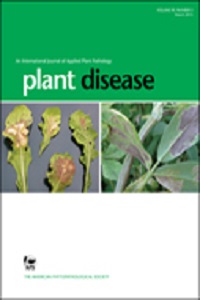Identifying and analyzing the diversity of resistance gene analogs in Colombian Rubus genotypes
Five Andean blackberry Rubus genotypes, three resistant and two susceptible to anthracnose, were used to identify regions in the Rubus genome with homology to disease-resistance genes found in other plant species. Polymerase chain reaction amplification with 12 pairs of primers and fragment cloning yielded 520 clones, of which 151 showed inserts between 500 and 700 bp long. When sequenced, 47 clones showed homology with two types of resistance genes, non-Toll/interleukin-1 receptor (TIR) nucleotide binding site (NBS) leucine-rich repeat (LRR) and TIR-NBS-LRR, thereby confirming their designation as resistance gene analogs (RGAs). The number of RGAs detected per Rubus genotype ranged from 7 to 11, with the highest in a wild resistant and a cultivated susceptible genotype. Rubus RGAs were also homologous with several non-TIR- and TIR-type RGAs found in other members of the Rosaceae family (Rosa hybrid cultivar, Rosa roxburghii, Malus × domestica, M. prunifolia, M. baccata, M. floribunda, Pyrus communis, Prunus persica, P. kansuensis, P. avium, and Fragaria vesca). Three RGAs shared identity with two Rosaceae RGAs associated with the CRPM1 locus for powdery mildew resistance in R. roxburghii and the Rosa hybrid cultivar. This is the first report on RGAs present in the Andean blackberry in Colombia.

